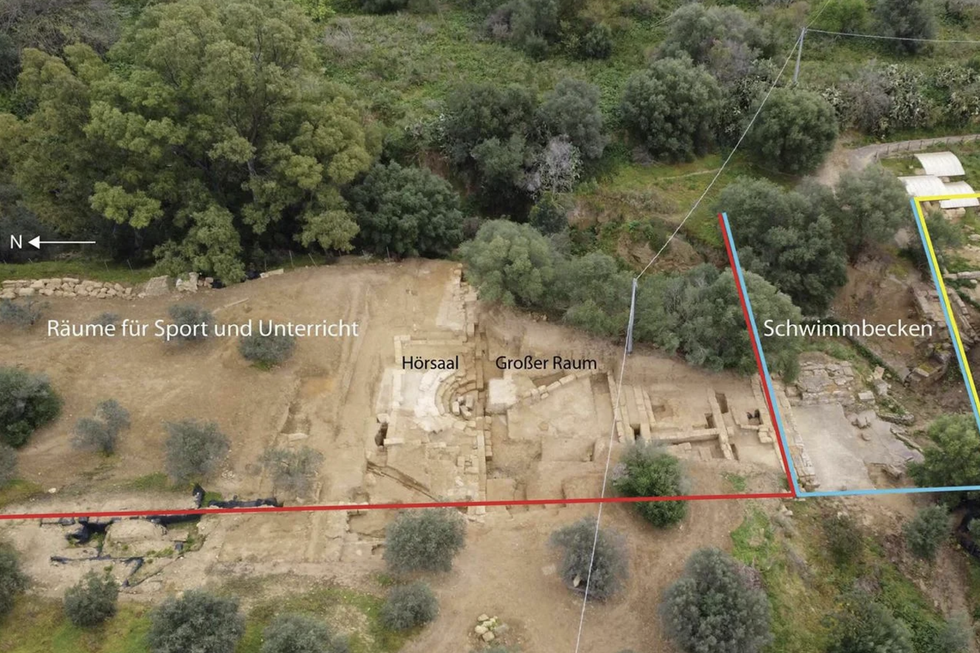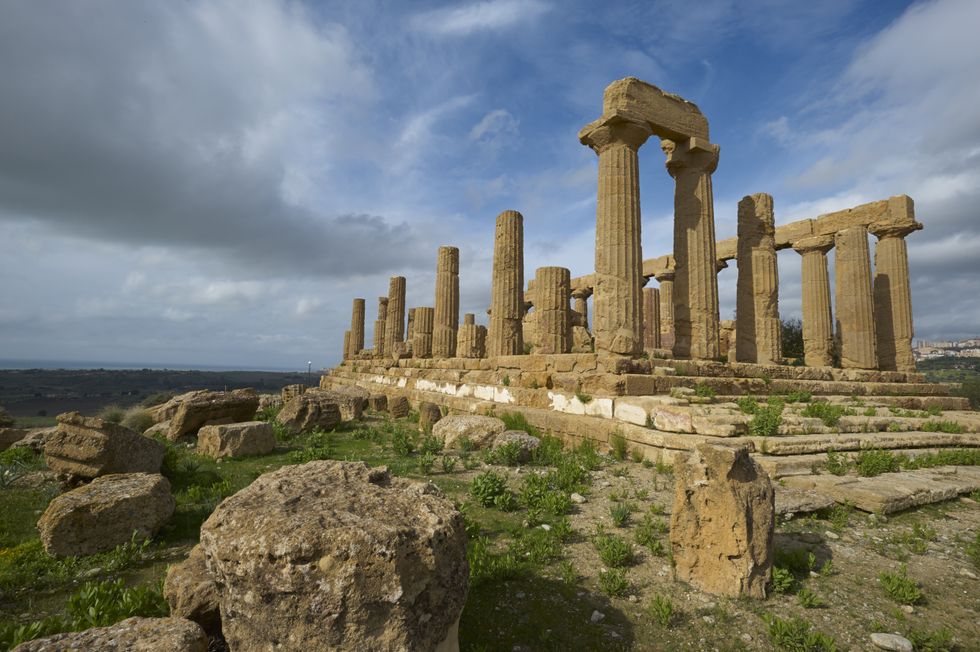Experts hope that their latest find will help them reconstruct what daily life was really like for ancient civilisations
Don't Miss
Most Read
Trending on GB News
Archaeologists have discovered the "oldest" auditorium from the ancient Greek world in Sicily.
The international team, led by Professor Monika Trümper and Dr Thomas Lappi, discovered the 2,200-year-old structure as part of an impressive gymnasium complex.
This remarkable find has offered unique insights into how young citizens were educated in the ancient Greek colony, which focused heavily on both intellectual and physical training.
The gymnasium in Agrigento, founded around 580 BCE, was already known to be remarkably vast compared to other ancient complexes.

A drone image from the research team reveals a bird's eye view of the newly-discovered gymnasium in Sicily
Freie Universität Berlin, Institute of Classical Archaeology
It is currently the only known example in the western Mediterranean featuring 200-metre long racetracks and a large swimming pool.
These impressive facilities were confirmed during the recent excavations carried out in March 2025 by the Berlin team in cooperation with the Politecnico di Bari and Parco Archeologico Valle dei Templi di Agrigento.
The newly discovered auditorium takes the form of a small covered theatre with eight ascending semicircular rows, providing seating for approximately 200 people.
When the gymnasium was built in the second century BCE, no other gymnasium in the ancient world featured a comparable auditorium until a similar theatre-style structure was constructed around 250 and 300 years later in Pergamon, modern-day Turkey.
The auditorium opens onto a spacious room with benches, designed for learning activities including lessons, presentations and competitions.
LATEST ARCHAEOLOGICAL FINDS:
Another sensational discovery awaited the excavation team in the semicircular orchestra of the auditorium where teachers and students once performed thousands of years ago.
Two large blocks inscribed in Greek were found with letters engraved into white plaster surfaces and highlighted with red paint.
The text refers to a gymnasiarch (a leading official) and someone who financed the renovation of the changing room's roof, dedicating it to Hermes and Heracles, the deities of Greek gymnasia.
Despite Agrigento being settled for over 1,000 years, very few inscriptions revealing the city's social life have been preserved.
The style of lettering suggests the inscription dates to the late first century BCE, when Agrigento was under Roman rule.

Despite Agrigento being settled for over 1,000 years, very few inscriptions revealing the city's social life have been preserved
GETTY
It indicates that despite the change in leadership, citizens maintained Greek language, administrative structures and traditions.
The unique ensemble suggests intellectual development was valued equally alongside physical training in ancient Greek education.
The research team now has ambitious plans for their 2026 excavation campaign at the site as they hope to uncover additional spaces used for exercise and learning to the north of the auditorium.
The archaeologists also aim to find more inscriptions that will help them reconstruct daily life in Agrigento's ancient gymnasium.








